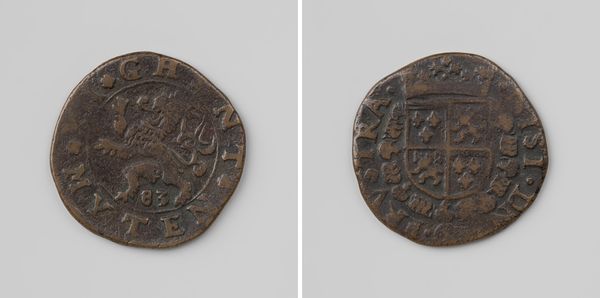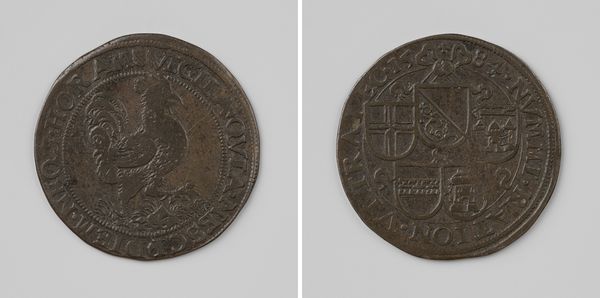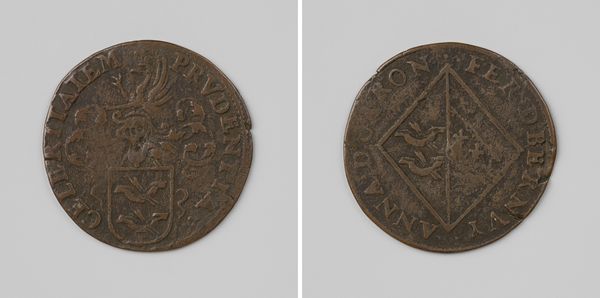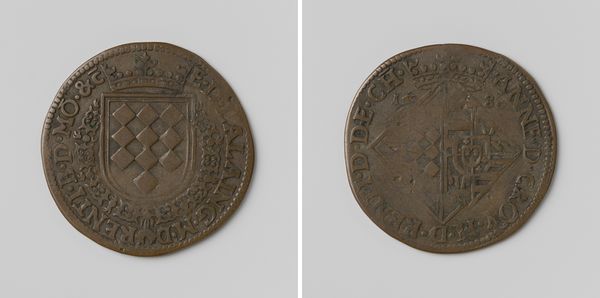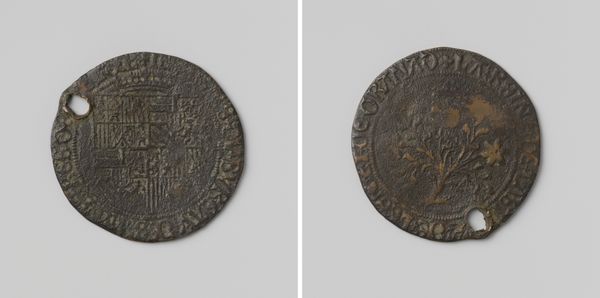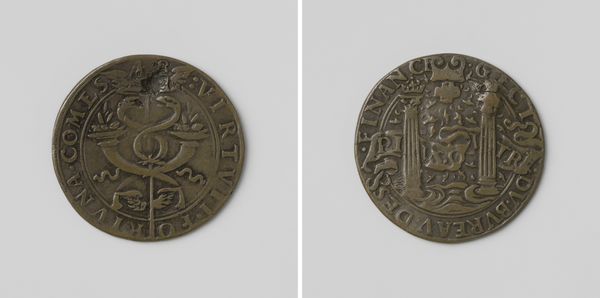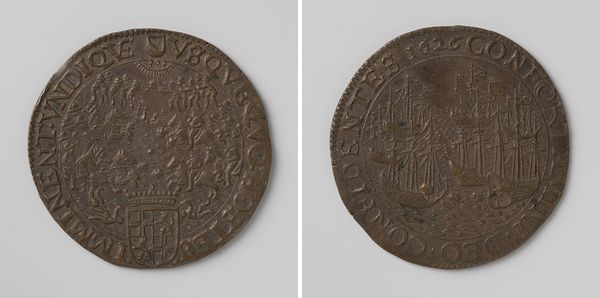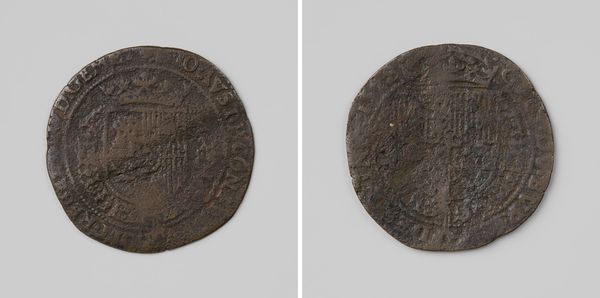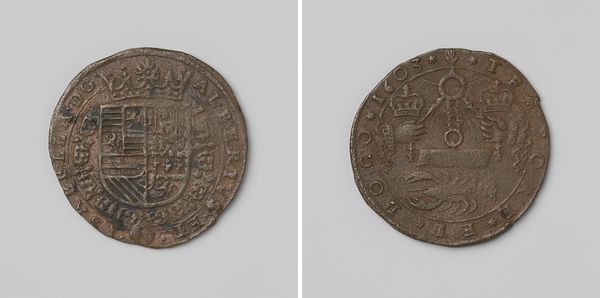
Maurits, graaf van Nassau, breekt het beleg van 's-Hertogenbosch af, rekenpenning ter ere van Albrecht en Isabella van Oostenrijk 1603
0:00
0:00
metal, engraving
#
portrait
#
metal
#
11_renaissance
#
history-painting
#
engraving
Dimensions: diameter 2.5 cm, weight 3.78 gr
Copyright: Rijks Museum: Open Domain
Curator: Here we have a metal coin, made around 1603 by an anonymous engraver. Its title in English would be something along the lines of, “Maurits, Count of Nassau, ends the siege of ’s-Hertogenbosch," struck to honor Albert and Isabella of Austria. Editor: The material and compact size are striking; this little token holds a weight and complexity that feel at odds with its scale. Curator: Indeed. It's essentially a propagandistic tool, reflecting the politics of the time. This coin celebrates the military prowess of the Habsburg rulers. Such tokens were distributed to commemorate events and reinforce political allegiances. Editor: Looking closely, the iconography is really interesting. The use of heraldic symbols communicates power and lineage and would have been instantly recognizable. What strikes me, though, is that we are clearly missing part of its text around the rim. Curator: Precisely. While coins served a practical function in commerce, these engraved commemorative pieces also functioned as potent reminders of sovereignty. Remember, this was during the Eighty Years' War, and imagery was a key weapon. The production of these coins reflects an appeal to maintain the Habsburg claim in the Netherlands. Editor: It’s curious to see how this contrasts with some more traditional paintings from the same period. You have this tiny piece making very specific assertions about power, while nearby galleries might show landscapes developing their own visual authority. Curator: A fair comparison. The distribution of power is what defines the piece: it reflects how art played an active part in early modern statecraft. It aimed to manufacture consent and assert the dominance of the Habsburgs amidst turbulent times. Editor: This coin exemplifies how art can crystallize complex political and cultural dynamics into a tangible object. Its compact scale shouldn't obscure its significance as a political symbol. Curator: Precisely. These tokens serve as important reminders of the intersection between politics and artistry, inviting us to interpret the historical moment and its implications.
Comments
No comments
Be the first to comment and join the conversation on the ultimate creative platform.
